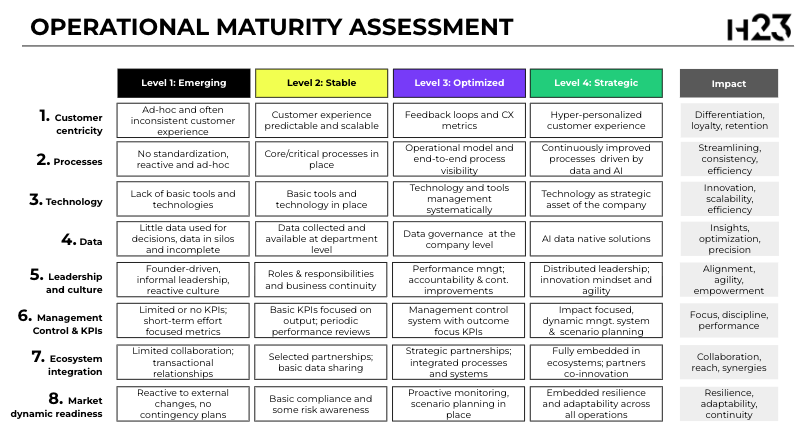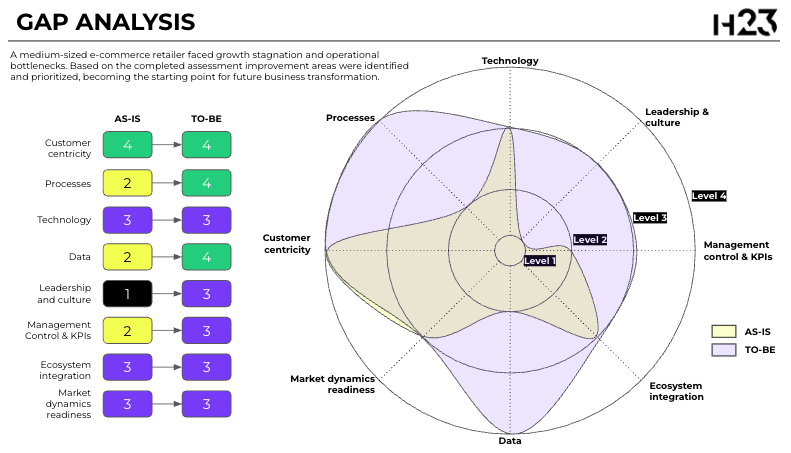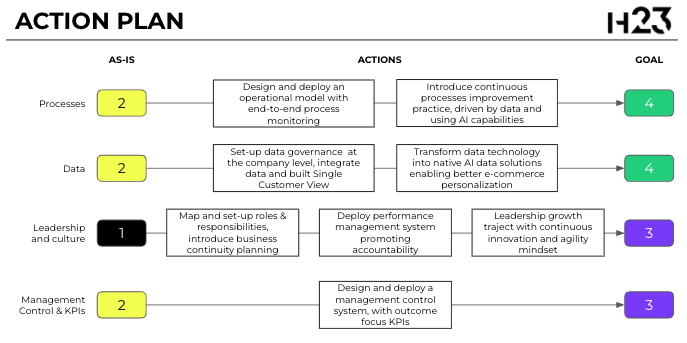This blog post gives a sneak peek into a multi-dimensional operational maturity model which we use with our customers. Grounded in both, academic research and our practical consulting experience, it provides leaders with a diagnostic framework, prioritization tools, and a pragmatic roadmap for achieving operational excellence.
The changing face of Operational Excellence frameworks.
Traditionally, operational excellence has been synonymous with lean processes, Six Sigma, and cost optimization. While these remain important, they are insufficient in addressing the challenges organizations face today:
- Digital disruption
- Geopolitical and supply chain volatility
- Sustainability imperatives
- Evolving customer expectations for personalization and speed
McKinsey argues that modern operational excellence requires “a performance infrastructure that integrates processes, technology, and people into an adaptive, scalable system.” Similarly, Accenture emphasizes a shift towards digital operations and ecosystem collaboration as critical levers for growth.
While CEOs may be familiar with these concepts, they often lack a practical tool for assessing operational maturity and planning their path to excellence.
The 8 dimensions of operational maturity used in Operational Excellence.
Operational maturity is multi-dimensional and non-linear, not achieved by excelling in one area (companies often excel in some areas while lagging in others). To drive it towards excellence, it requires progress across eight critical dimensions:
- Customer centricity, from inconsistent experiences to hyper-personalized customer journeys.
- Processes, from reactive, ad-hoc workflows to continuous improvement driven by data and AI.
- Technology, from basic tools to AI-native platforms driving innovation.
- Data, from siloed and incomplete datasets to company-wide governance and advanced analytics.
- Leadership & culture, from founder-driven decision-making to distributed leadership and agility.
- Management control & KPIs, from minimal metrics to dynamic performance management systems.
- Ecosystem integration – From transactional supplier relationships to co-innovation with partners.
- Market dynamics readiness – From reactive compliance to embedded resilience and scenario planning.
Each dimension progresses through four maturity levels: Emerging → Stable → Optimized → Strategic.

The business value of operational maturity.
- Top-line growth: enhanced CX + faster GTM = new revenue streams
- Cost reduction: leaner operations + automated workflows = reduced waste
- Margin improvement: combined revenue + cost gains = uplift EBITDA
Based on research published by McKinsey the impact of Operational Excellence implementation can reduce cost by up to 25% in some business areas (i.e. technology) and drive efficiency gains of up to 30% (McKinsey, 2024).
Case Study: Operational Excellence in medium-sized e-commerce retailer.
Background
A mid-sized e-commerce retailer operating in two European markets faced growth stagnation, operational inefficiencies, and increasing customer churn.
Prioritizing change
A critical element of any transformation is the ability to prioritize initiatives that deliver maximum business value. The effort vs impact framework allows organizations to assess which dimensions of operational maturity will yield the greatest return relative to the resources required for their specific business.
For our customer the map of priorities looks as follows:

Dimensions like Processes and Management KPIs often emerge as quick wins, while Ecosystem Integration and Leadership & Culture are longer-term strategic priorities. This framework forms the foundation of the business case for operational excellence investments.
Gap analysis
- Processes: reactive workflows, high dependency on key individuals
- Data: siloed and inconsistent, limiting personalization
- Technology: legacy platforms unable to scale
- Leadership & culture: founder-centric decision-making

Transformation roadmap
- Phase 1: Quick wins (processes, KPIs, data governance)
- Phase 2: Enable scaling (tech modernization, leadership alignment)
- Phase 3: Build resilience (ecosystem partnerships, scenario planning)
This approach balances momentum with long-term transformation goals moving towards:
- Streamlined fulfillment and standardized workflows
- Modernized tech stack with cloud-native e-commerce platforms
- Embedded data governance and real-time dashboards
- Distributed leadership model to enable agility
This case illustrates how a structured approach can help organizations move from AS-IS reactive operations to a TO-BE state of scalable, data-driven performance.

Operational excellence is not optional in today’s business reality. It is the backbone of resilient, adaptable, and customer-focused organizations. Those who invest strategically in their operational maturity will outperform competitors and position themselves for sustainable growth.
At h23, we partner with clients hands-on to close maturity gaps, building scalable, resilient operations that deliver sustainable growth. We enable companies to bridge strategy and execution. Check out our services!
